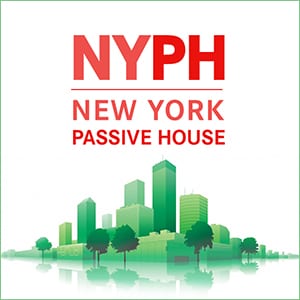The Passive House standard has evolved over the past 25 years, starting from a single structure in Europe to an internationally recognized organization. Passive House requirements are guidelines are designed to reduce specific carbon impact of energy consumed from the earth, regardless of how it is delivered. The Intergovernmental Panel on Climate Change (IPCC) has outlined several Representative Concentration Pathways (RCPs) that indicate the probability that we will exceed a global mean surface temperature (GMST) rise greater than 2°C by the year 2050. Passive House was developed to target RCP2.6, which limits total global carbon emissions to 800 gigatons and anticipates a rise of less than 2°C GMST.
There are several certification criteria for Passive House certification. The new construction building in question must have:
- Yearly heating demand of less than 4,750 btu/hr*yr*ft2
OR Peak heating demand of less than 3,170 btu/hr*yr*ft2
- Yearly cooling demand of less than 4,750 btu/hr*yr*ft2
- Primary energy demand (the losses in energy distribution from the source, e.g. power lines, natural gas pumping, etc.)
- Building infiltration of less than 0.6 air changes per hour
Buildings designed to Passive House standards will make use of several high efficiency measures to meet the certification requirements such as typical wall and roof R values around R40 and R50 respectively, triple pane windows, induction cooktops, heat pump dryers and water heaters, variable refrigerant heating and cooling, condensing water heaters, and on site renewables.
Though Passive House started with single family homes, New York City’s aggressive approach to energy conservation has led to rapid development of larger Passive House structures within the five boroughs. In addition to a multitude of private high rise Passive House developments, New York City has also begun to issue RFPs for city development projects that give preference to Passive House design – a major step forward for Passive House in urban environments.
For more information on Passive House on a global scale, visit http://passiv.de/en/
For Passive House in New York City, visit the local organization at http://nypassivehouse.org/


